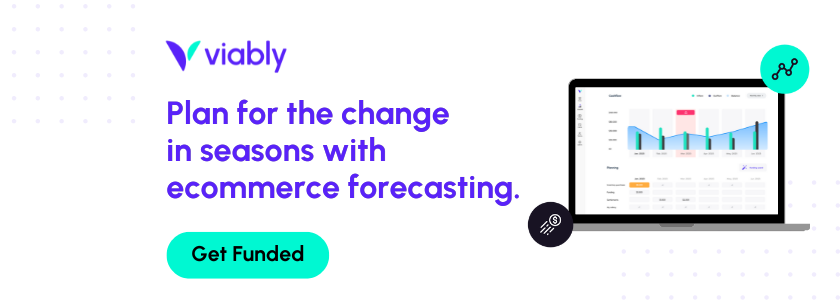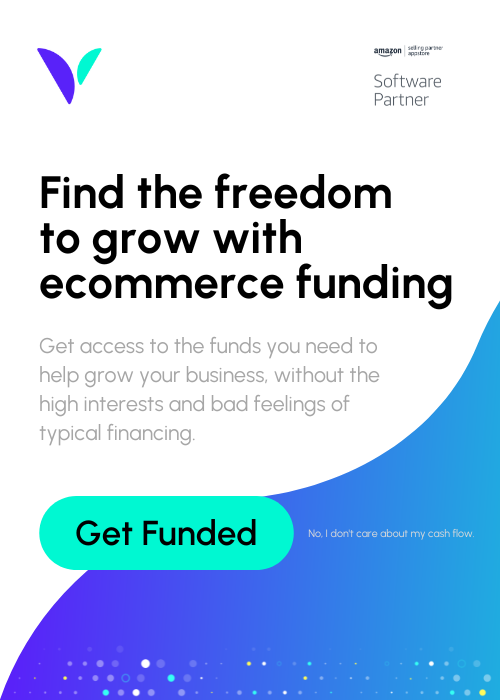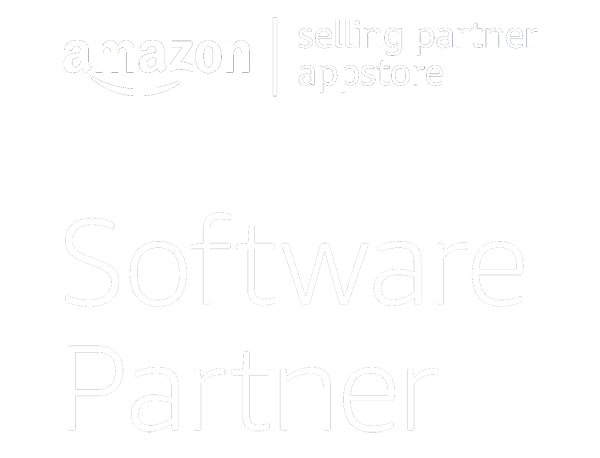Successful Amazon sellers make a habit of reinvesting profit back into business growth. They put most of their cash toward restocking, product launches, marketing campaigns, and other growth opportunities. Unfortunately, built-in delays in Amazon’s payout process can stifle the process, which is why eCommerce cash advances can be important.
Instant cash advance options are an increasingly popular way for eCommerce entrepreneurs to access their hard-earned capital early. Cash advances provide businesses with quick and easy infusions of cash to help them take advantage of opportunities, pay down debts, purchase inventory or cover other costs.
Of course, they cost money and must be used strategically. If used correctly and directed towards long-term growth, cash advances can serve as an excellent tool for building profits, especially for sellers who are in the early stages of building their business.
How to use next day payouts for growth
Using an instant cash advance or working capital advance allows you to collect your Amazon revenue the next day for a small percentage of your sales (usually between 0.5% and 2%). It’s a debt free way to improve cash flow quickly. The key is to use this working capital advance with intention, otherwise you’re simply losing a percentage of your sales without any return.
Let’s talk about how a cash advance could be used to make your eCommerce business profitable:
1. Invest in inventory: Purchase more stock without waiting on Amazon’s payment schedule. The benefits include:
- Avoiding stockout and building momentum for your listing
- Capitalizing on low inventory costs
- Buying inventory in bulk for a discount
- Shortening the cycle from purchase to sale to revenue, helping you sell exponentially more units
2. Pay down debt: Instant cash advance allows you to pay for business expenses quickly. This helps keep costs low and gives businesses more flexibility when it comes to managing cash flow.
Examples of an Amazon seller using cash advance
Restocking
Ron is growing his business through retail arbitrage. He works a full-time job, but his business is doing well and he wants to grow faster.
He just purchased $10,000 dollars worth of discounted product, and he knows he can get more once he has the cash. In two weeks, he’s close to selling out 200 units at 25% gross margin ($12,500 in revenue).
His listing has a ton of momentum and he’s generating positive reviews. He needs more product while it’s available, but he’s waiting for Amazon to pay him. It will be at least two weeks (maybe more), and by that point he will stock out. Not only will he miss his chance to stock up on inventory, but his listing will also suffer.
So, Ron takes a cash advance from Viably before he runs out of inventory. He takes $10,000 of his cash that’s currently sitting in account reserve, and pays Viably 2% ($200). He uses all of the money for more inventory (200 more units) and continues to sell at 25% gross margin. The result? Another $12,500 in revenue ($2,500 gross profit).
| Ron’s balance sheet | Without cash advance | With Viably Cash Advance (VCA) |
| Units sold | 200 | 400 |
| Cost of inventory | $10,000 | $20,000 |
| Revenue | $12,500 | $25,000 |
| Cost of capital | – | $200 |
| Net Profit | $2,500 | $4,800 |
Ron nearly doubled his profit from this product simply by getting paid faster. Not only that, but he maintained the momentum for his listing. This will help him continue to maximize his profit for this product in the future.
Paying off debt
Let’s say Ron generated his initial capital from credit cards. His plan was to spend the credit limit at the start of every cycle and then pay it down by the end of the month to avoid carrying a balance. His primary card carries an 18% interest rate.
At first, his plan usually worked. On the rare occasion that he carried a balance, his business was small and the interest payment was minimal. He almost always paid the balance in full, and when he didn’t, he caught up within a few days. But over time, the business grew and so did his credit limit.
Now, Ron uses the card to buy $10,000 worth of inventory at the start of his cycle. He sells the inventory over the next two weeks for $15,000. The only problem is, Amazon is holding $12,000 of his revenue in account reserve. The credit card bill is due, and Ron can only pay off $3,000 despite selling all of the inventory. The balance of $7,000 will cost him $1,260 in interest, cutting his profit significantly.
Instead of carrying the balance, Ron takes a cash advance from Viably for the $7,000 he needs to pay off the balance. He pays a 2% fee to Viably for $140 rather than paying the credit card interest.
| Ron’s balance sheet | Without cash advance | With Viably Cash Advance (VCA) |
| Cost of inventory | $10,000 | $10,000 |
| Revenue | $15,000 | $15,000 |
| Credit card balance | $7,000 | – |
| Interest / Cost of capital | $1,260 | $140 |
| Net Profit | $3,760 | $4,860 |
Ron saved over $1,000 simply by using a Viably cash advance to pay his credit card debt before the interest kicked in. Now, he can reinvest that profit back into his growth.
Maximize your cash flow with Viably Cash Advance
It’s no secret that more cash flow leads to more opportunities to grow. Too often, Amazon sellers are stuck in the perpetual cycle of waiting for sales payouts.
Before you take a cash advance, be sure to create a plan for how you’ll use it to grow your bottom line. If your business carries debt, consider paying it down with cash advance to stop paying interest. If you see opportunities to purchase more inventory, use a cash advance to maximize your window to sell.
Signup for Viably for free to see how Viably Cash Advance could generate cash flow for your business.




